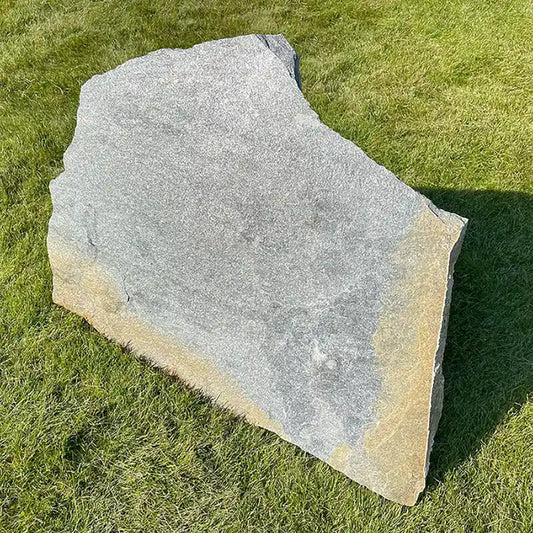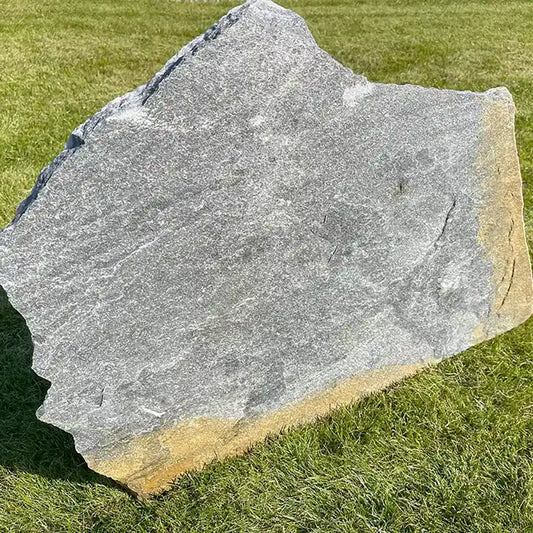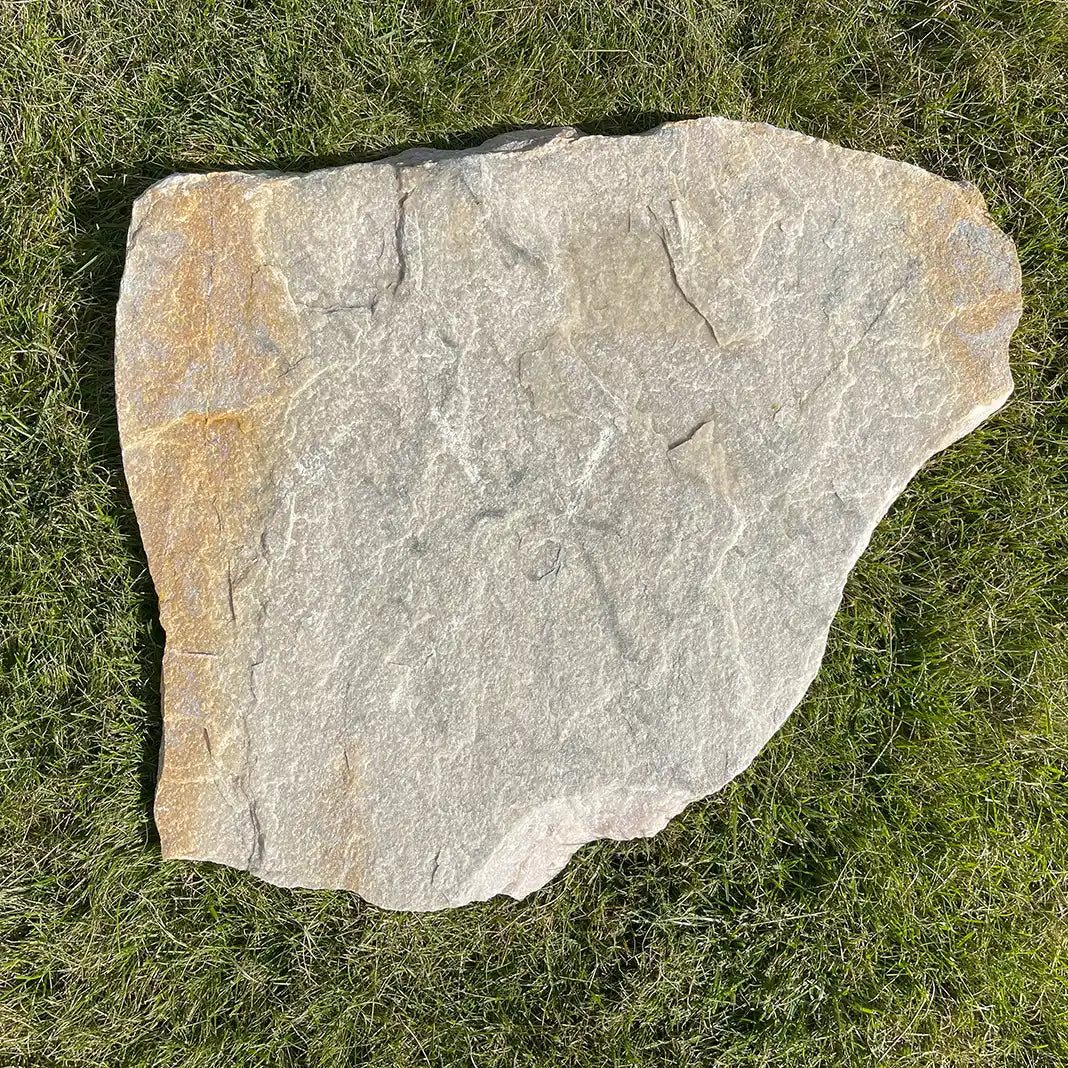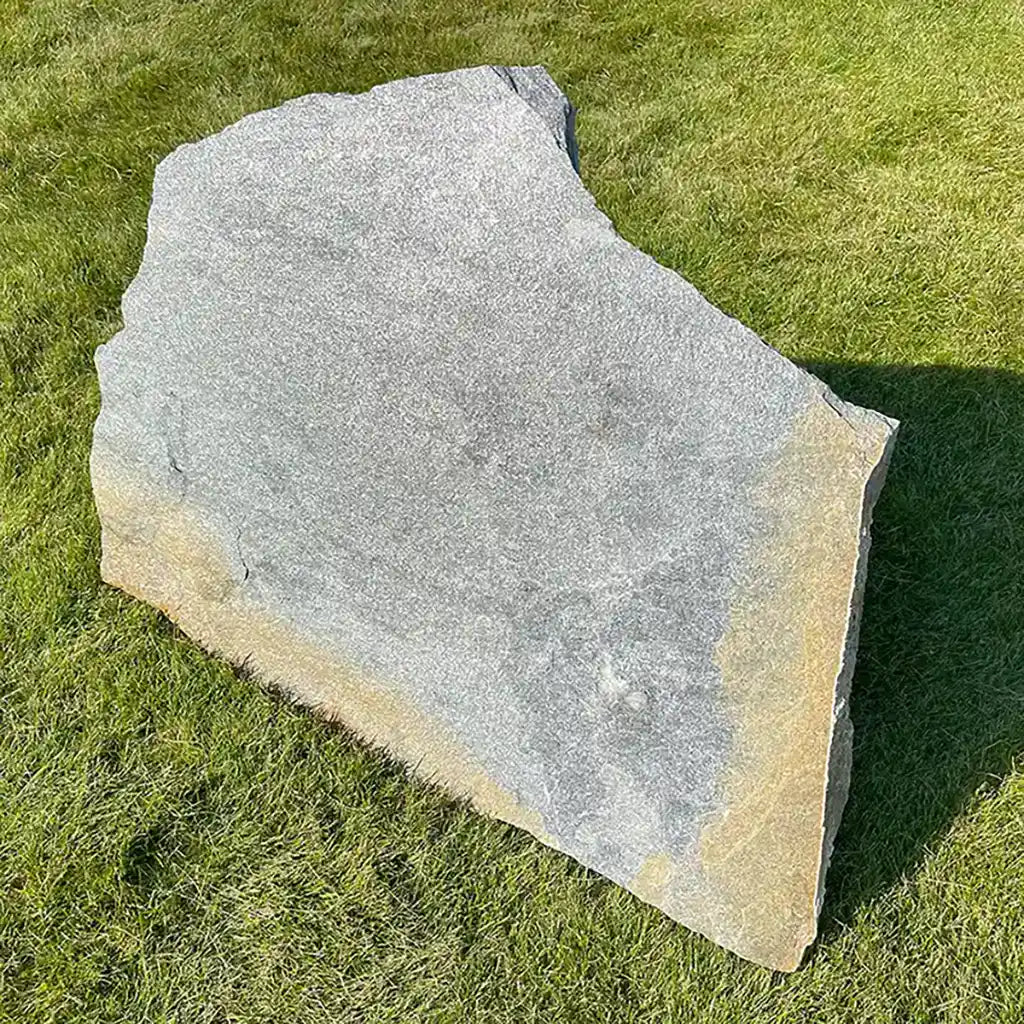
Properly Installing Stepping Stones: How to Avoid Breakage and Damage
Preparation of the Substrate
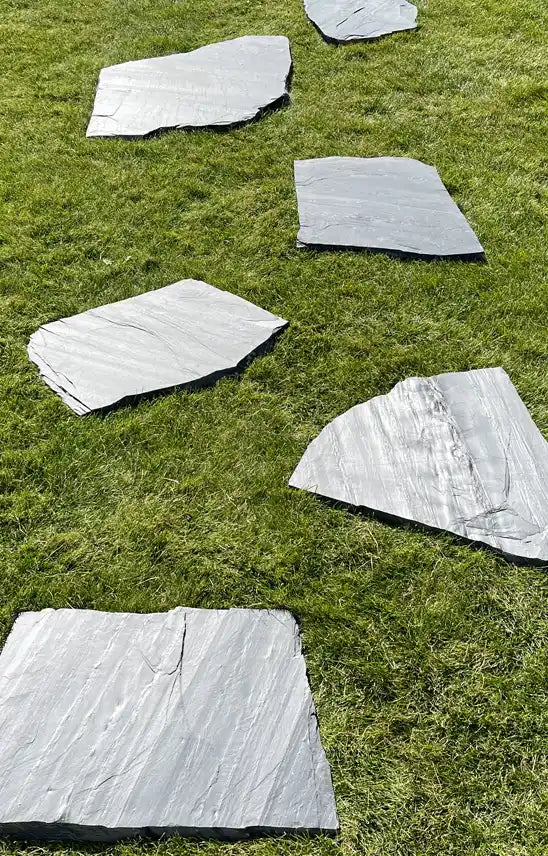
Various Installation Methods
Depending on the area of application and the desired appearance, there are various methods for laying stepping stones:
- Laying in gravel or chippingsIdeal for garden paths and areas with good drainage. The slabs are laid on a layer of gravel or chippings, allowing for easy drainage and creating a natural appearance.
- Laying on a sand bedA common method for terraces and paths. The slabs are laid on a level layer of sand and grouted with joint sand.
- Laying on a mortar bedFor a particularly stable and durable installation. The slabs are placed on a mortar bed and firmly tapped down. This method is especially suitable for heavily used areas.
- Laying on pedestalsEspecially suitable for roof terraces or uneven surfaces. The slabs are laid on height-adjustable pedestals, allowing for easy leveling.
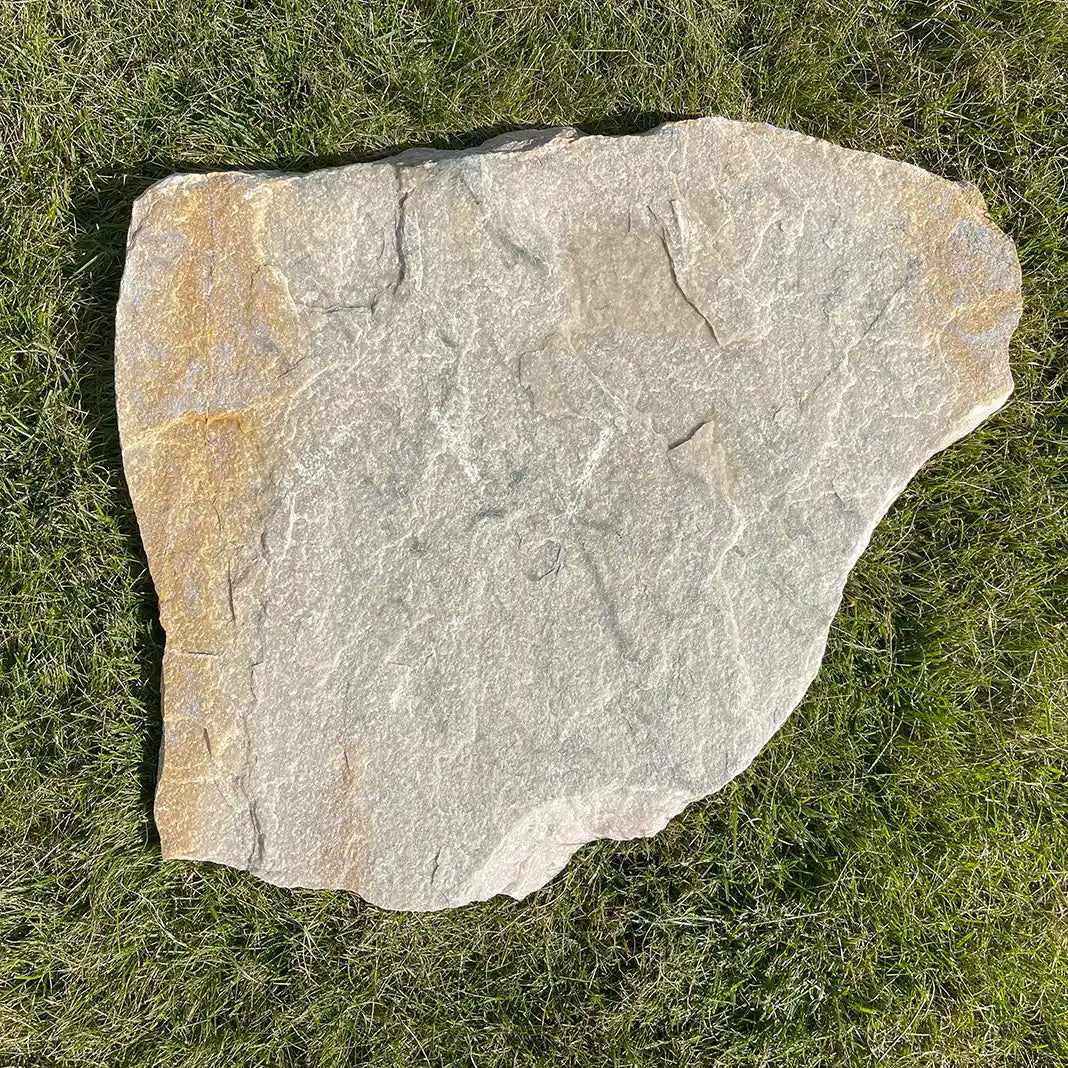
Placing Stepping Stones
Our Premium Quartz Stepping Stones
Especially in the area of polygonal quartzite slabs, we have a fine selection of 5 premium stone types.
- NEW Tread plates Jasmares Quartzite (greenish, gray)
- Footplates Antares Quartzite (rosé, accents with reddish brown tones)
- Footplates Quartzite Deep Sea (dark blue, anthracite)
- Footplates Polaris Quartzite (white, light gray)
- Footplates Quartzite Auralis (yellowish tones)
- Footplates Clara Quartzite (white, gray, beige, light shades in rose)
Discover our quartzite stepping stones - the perfect combination of natural beauty and exceptional durability! Our selection of quartzite stepping stones offers not only an aesthetically pleasing solution for your garden path but also a robust and durable surface, which withstands the daily stresses.
These natural quartzite slabs, available in various colors, add a touch of elegance to your Garden path, your terrace or entrance area a timeless charm. Quartzite is known for its unique grain pattern und seine Fähigkeit, den Elementen zu trotzen, was es zur idealen Wahl für den Außenbereich macht. Egal, ob Sie nach einer rustikalen Optik oder einem modernen Flair suchen, unsere Quarzit Footplates are versatile and adapt perfectly to your individual style. Design your outdoor area with the elegance and quality of quartzite stepping stones.
-
Tread plates Jasmares quartzite
Vendor:trittplatten.deRegular price From €74,00 EURRegular priceUnit price €4,40/kg€148,00 EURSale price From €74,00 EURSale -
Step plates Polaris Quartzite
Vendor:trittplatten.deRegular price From €74,00 EURRegular priceUnit price €4,40/kg€148,00 EURSale price From €74,00 EURSale -
Step plates Quartzite Deep Sea
Vendor:trittplatten.deRegular price From €69,00 EURRegular priceUnit price €5,08/kg€138,00 EURSale price From €69,00 EURSale -
Step plates Antares Quartzite
Vendor:trittplatten.deRegular price From €74,00 EURRegular priceUnit price €4,40/kg€148,00 EURSale price From €74,00 EURSale -
Step plates Clara Quartzite
Vendor:trittplatten.deRegular price From €69,00 EURRegular priceUnit price €4,07/kg€138,00 EURSale price From €69,00 EURSale -
Quartzite Auralis stepping stones
Vendor:trittplatten.deRegular price From €74,00 EURRegular priceUnit price €4,40/kg€148,00 EURSale price From €74,00 EURSale
trittplatten.de
Step plates Clara Quartzite
- Free shipping
- from 30 € per stepping stone
- Tel.: +49 (0)3332 26 70 78 27
Share
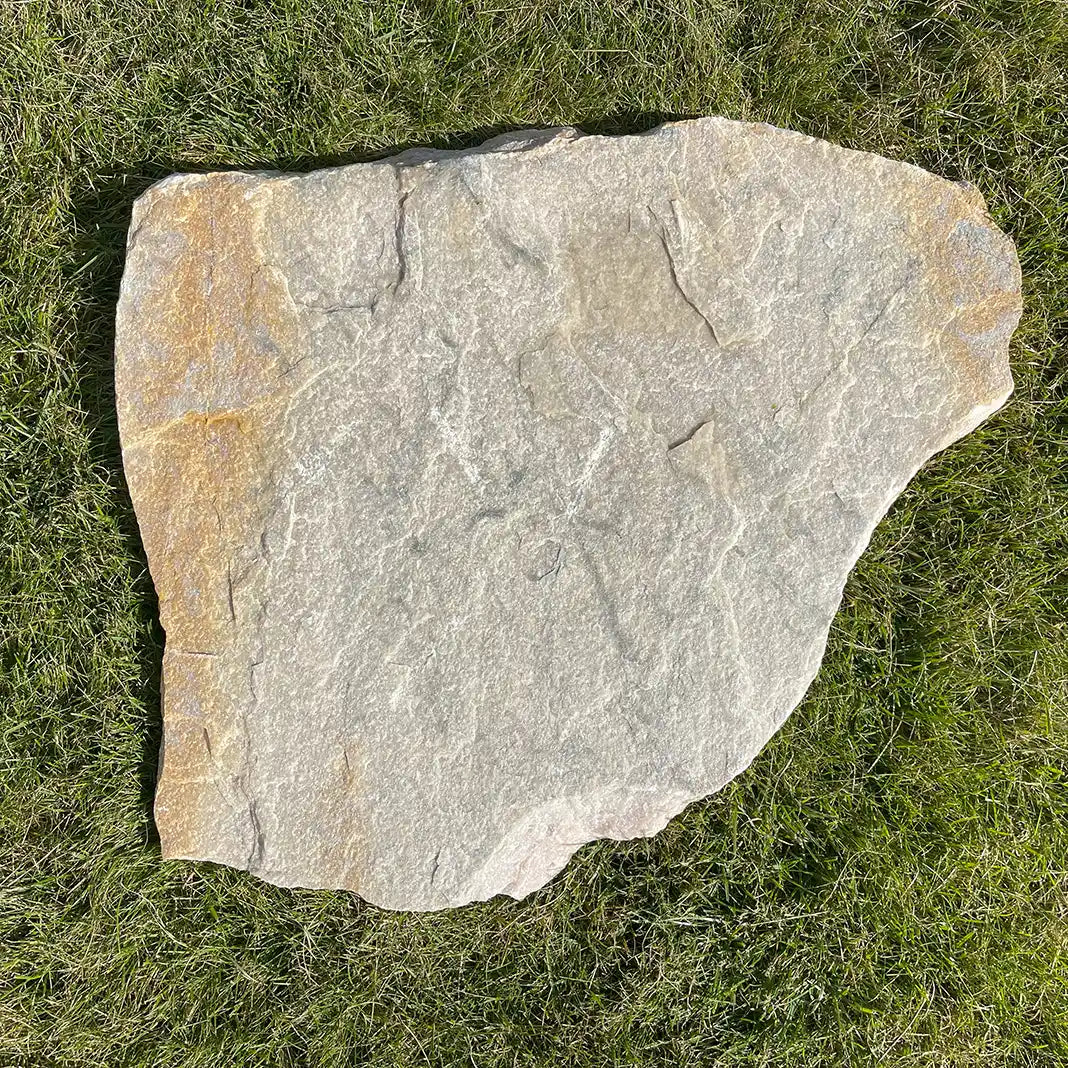
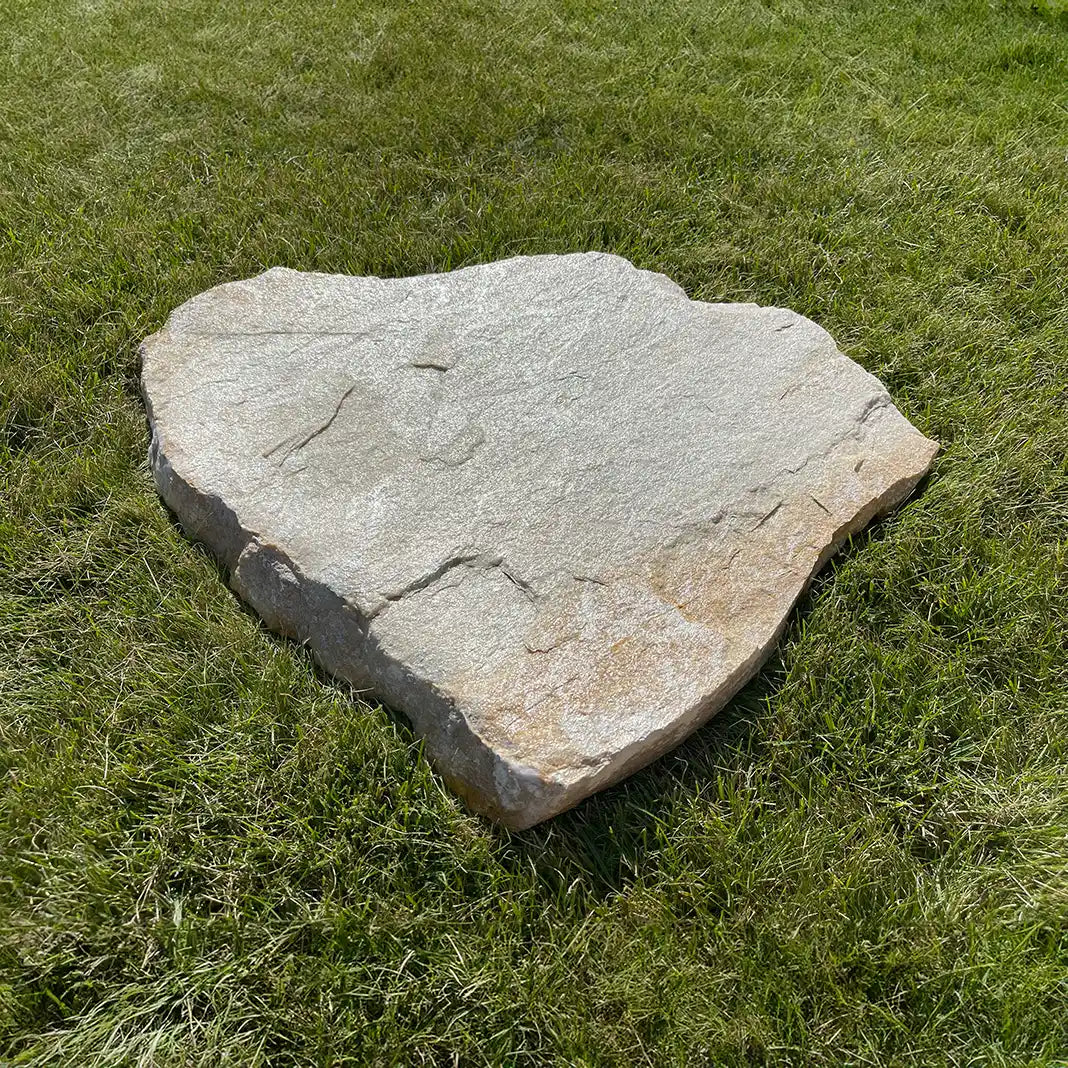
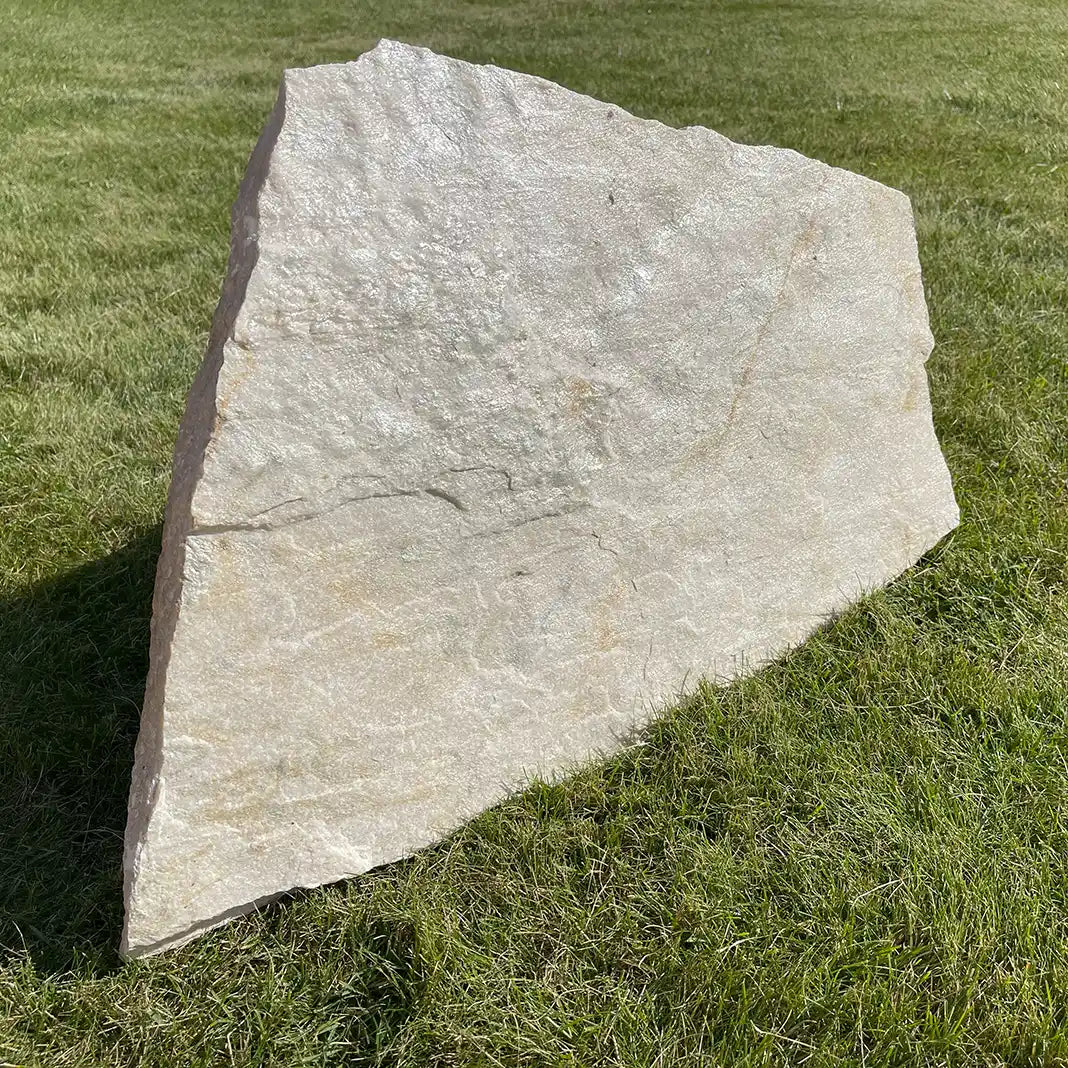
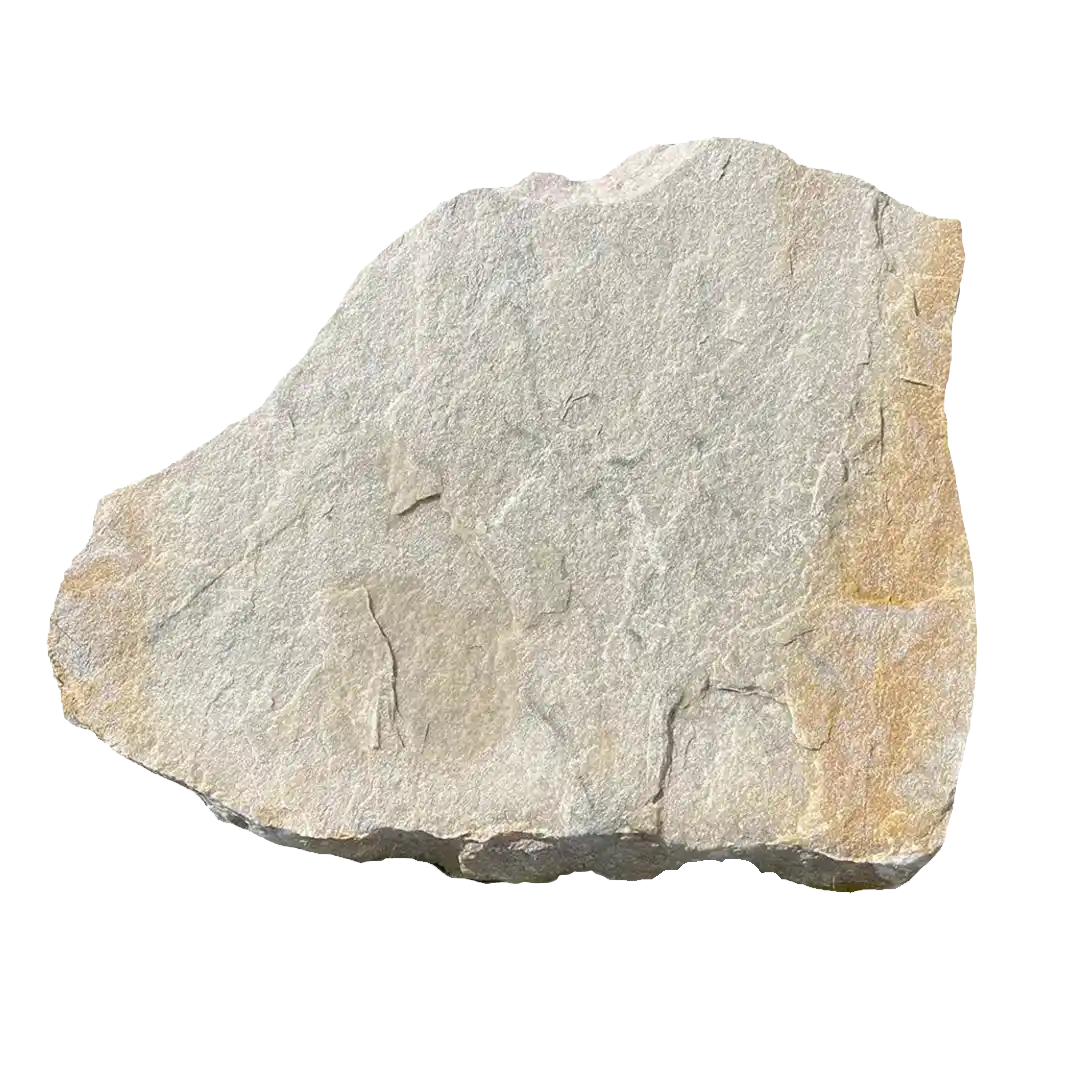
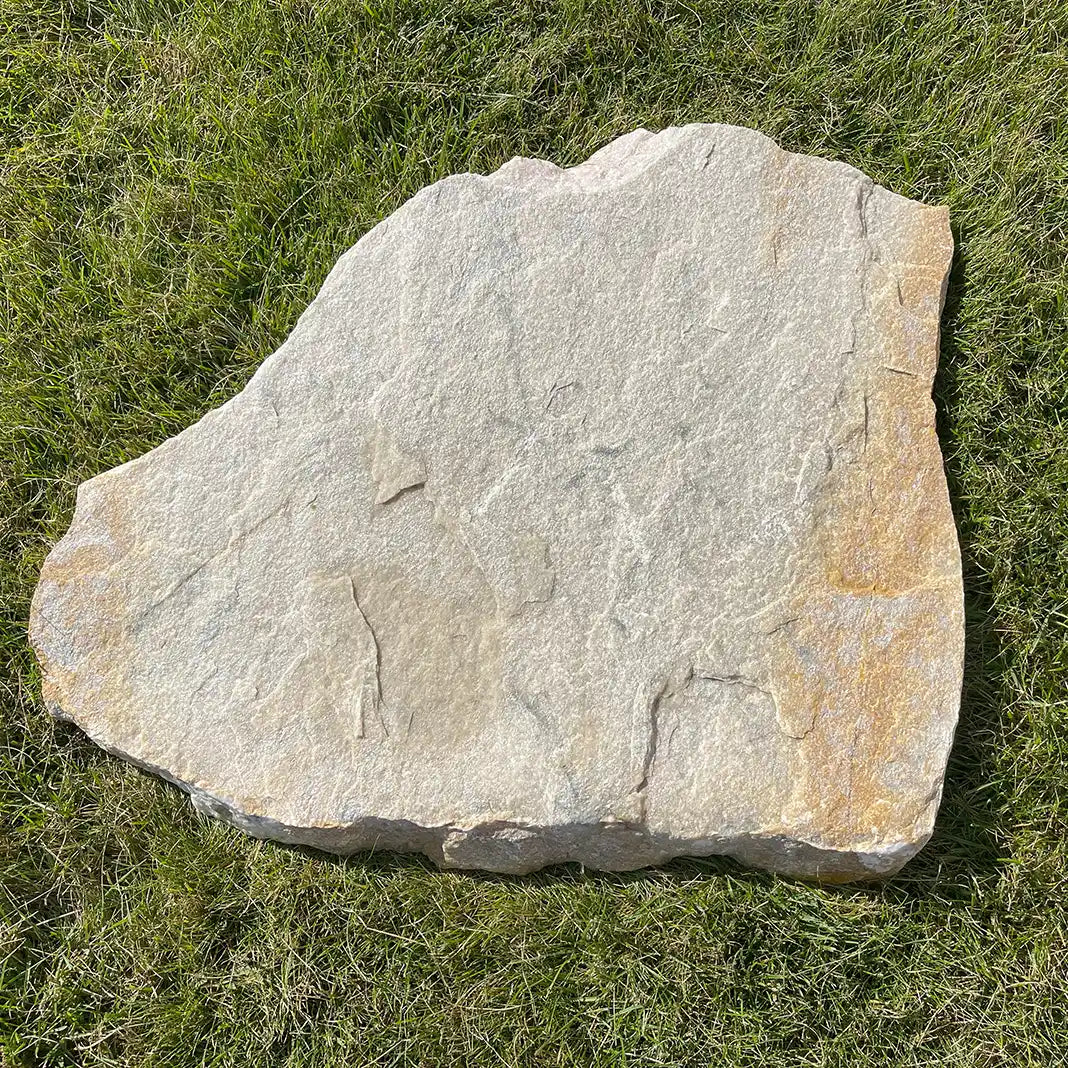
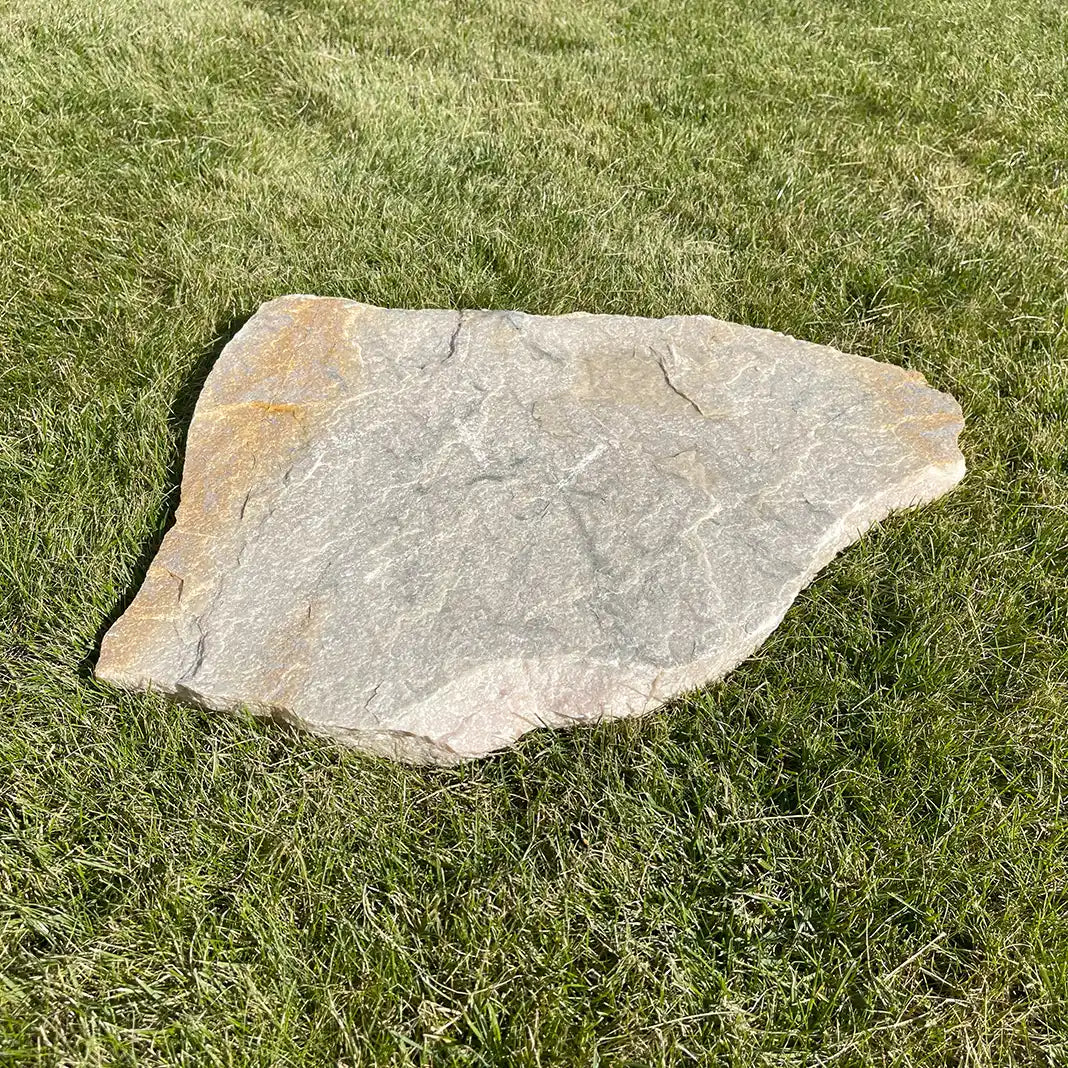
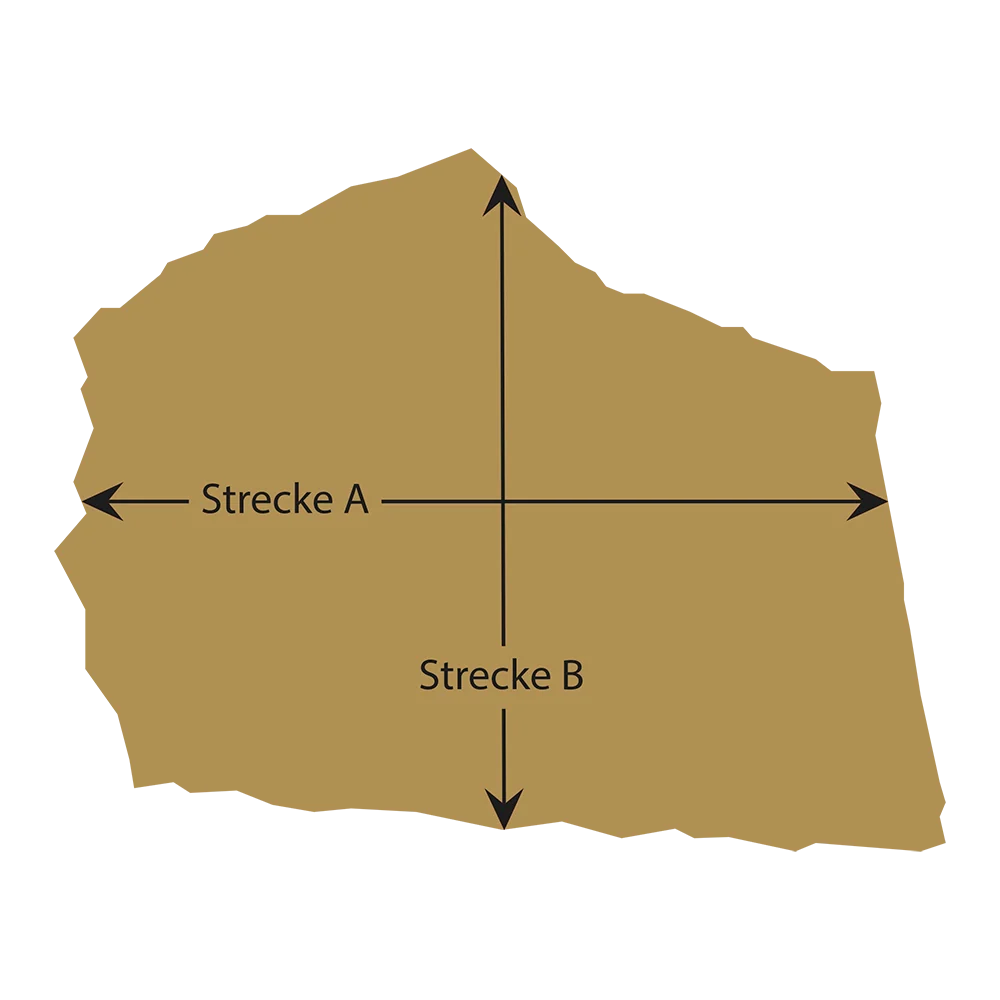
Gentle Placement of the Stones
trittplatten.de
Step plates Quartzite Deep Sea
- Free shipping
- from 30 € per stepping stone
- Tel.: +49 (0)3332 26 70 78 27
Share
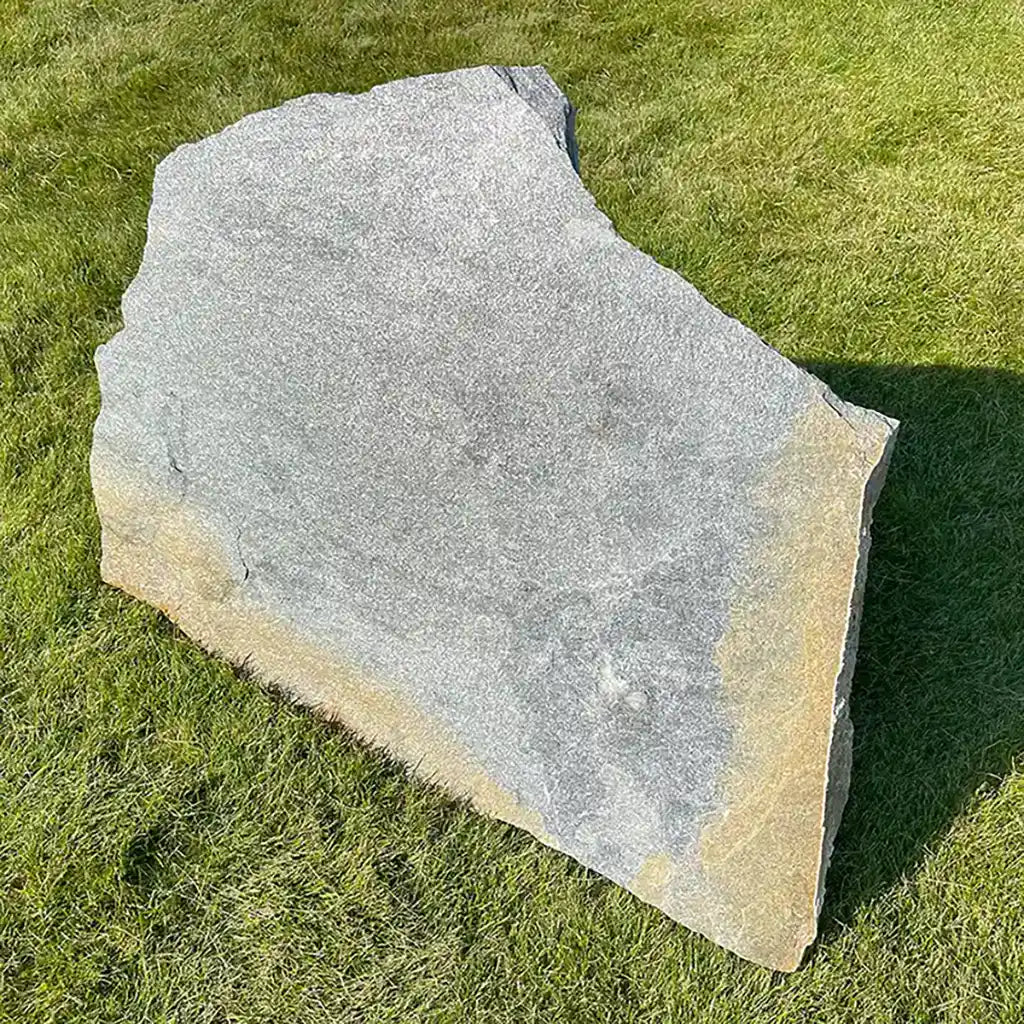
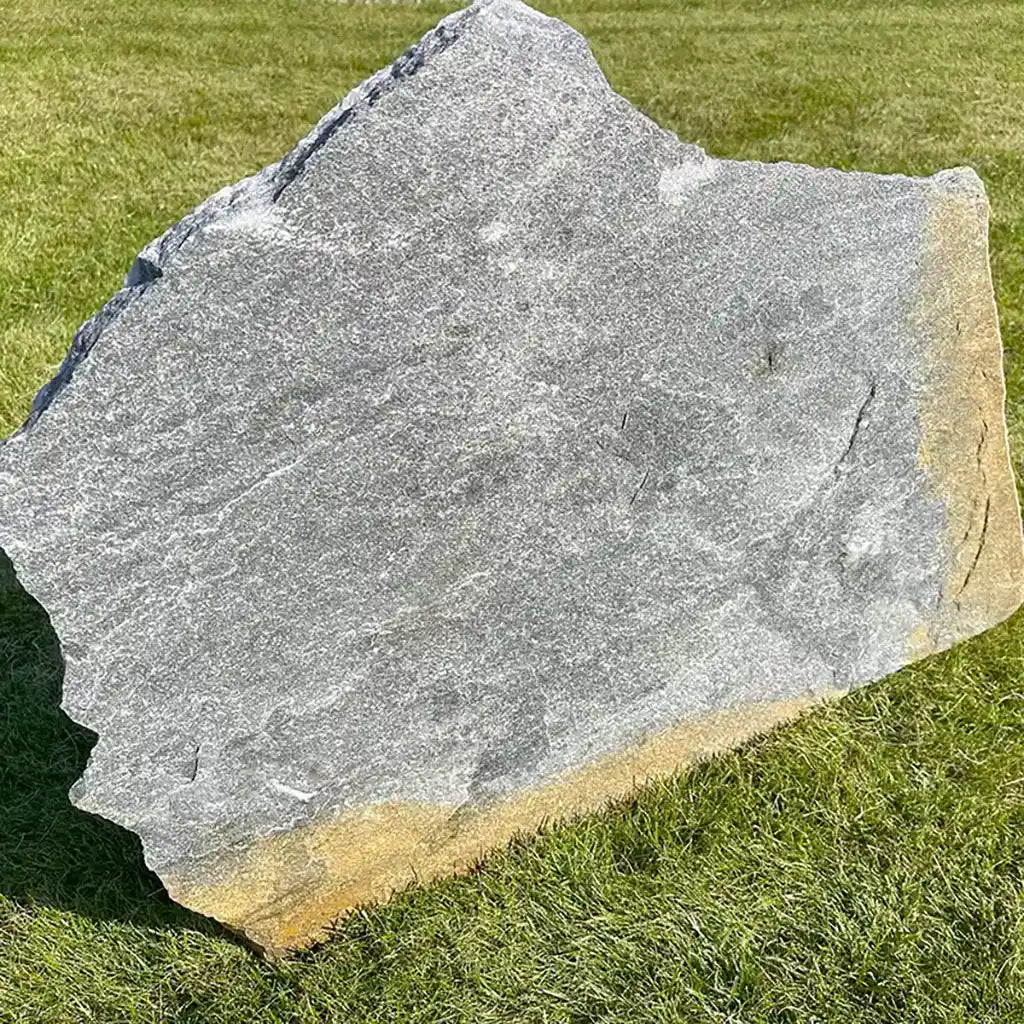
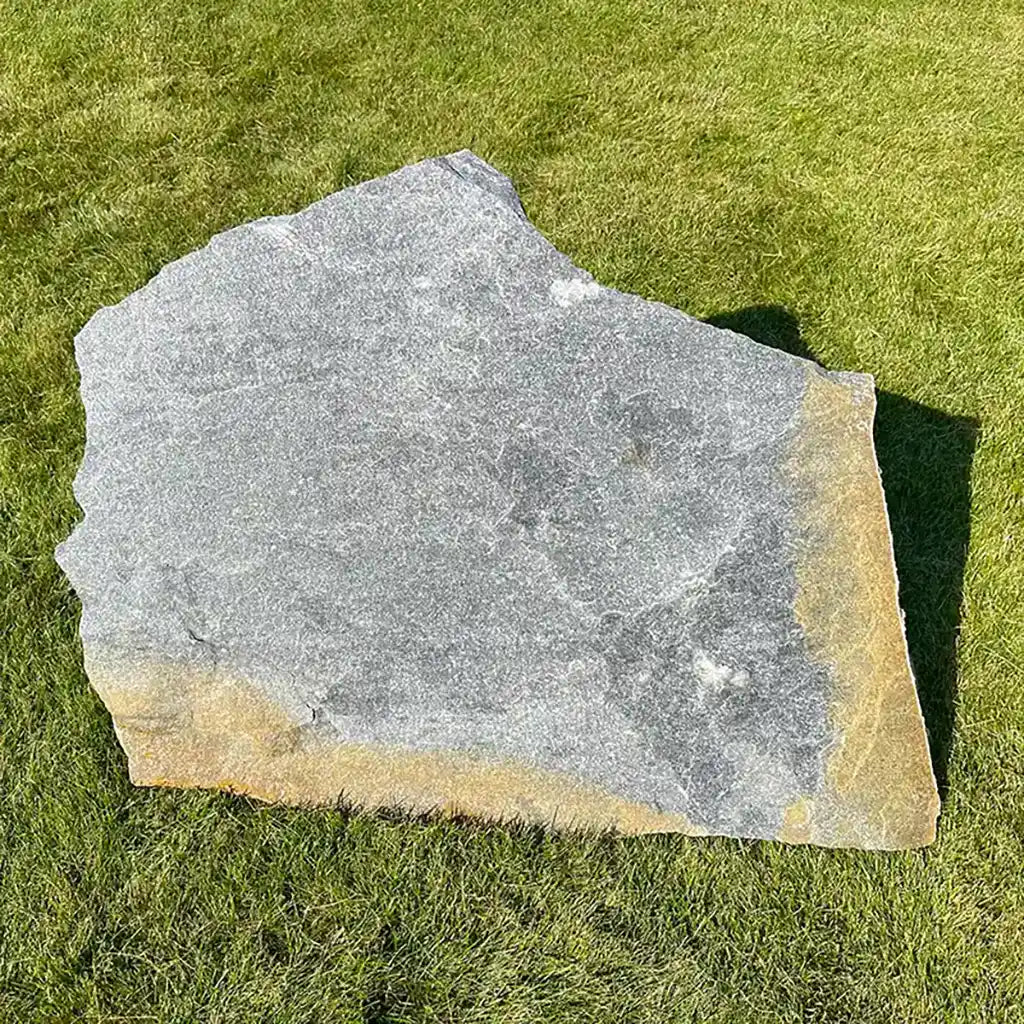
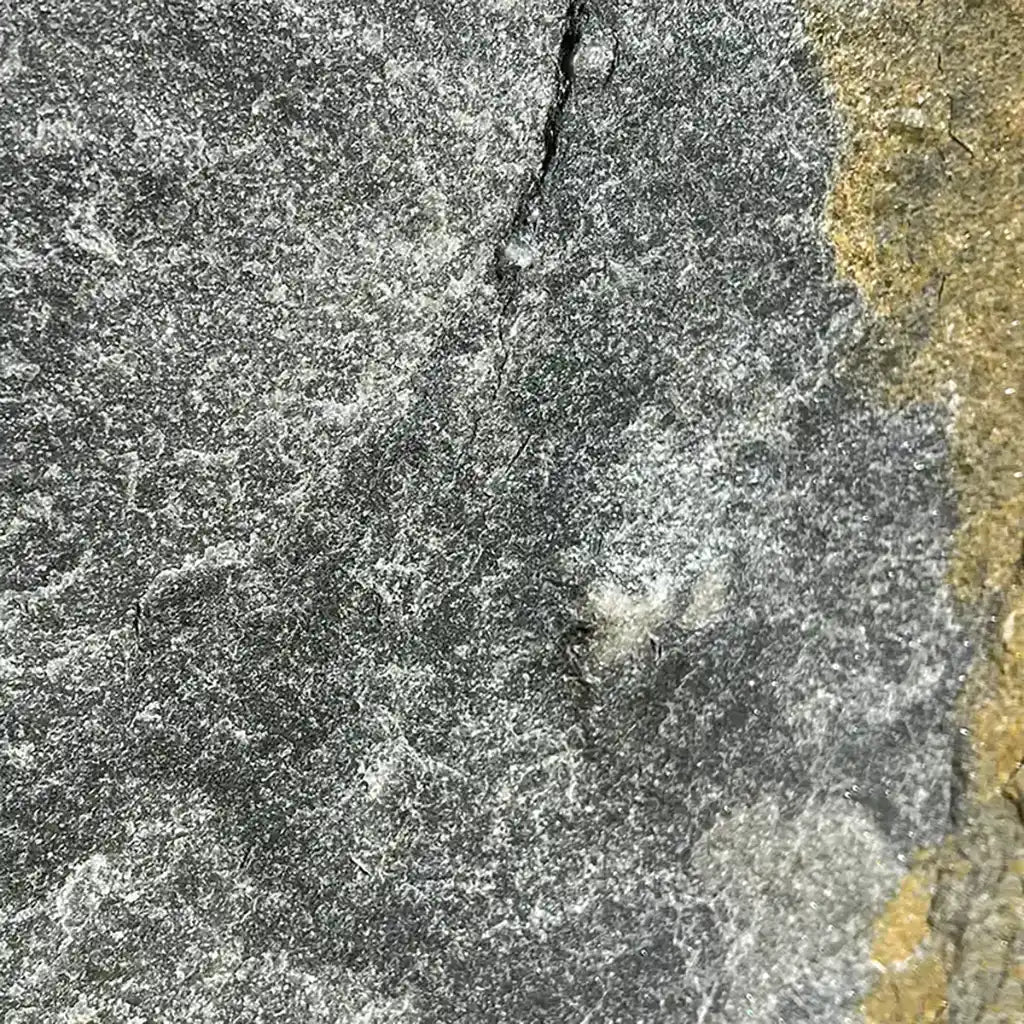
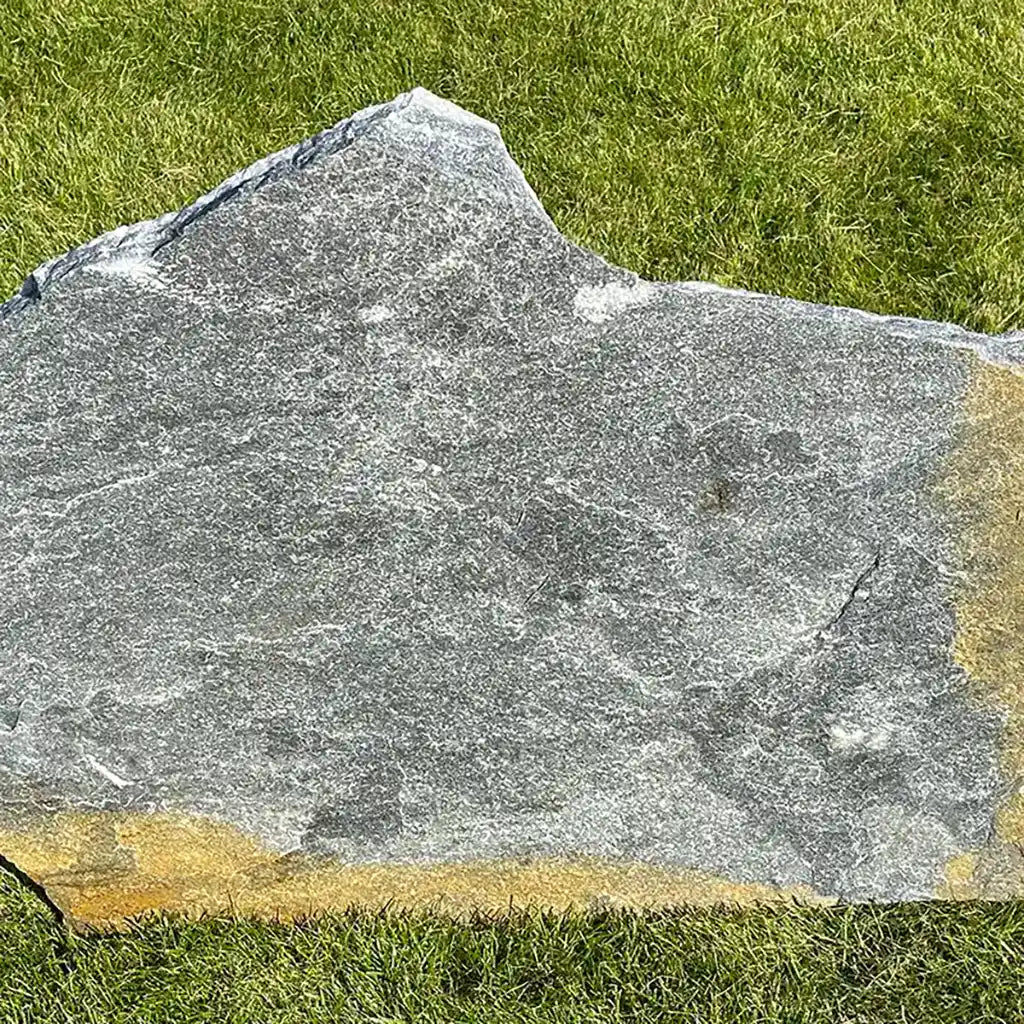
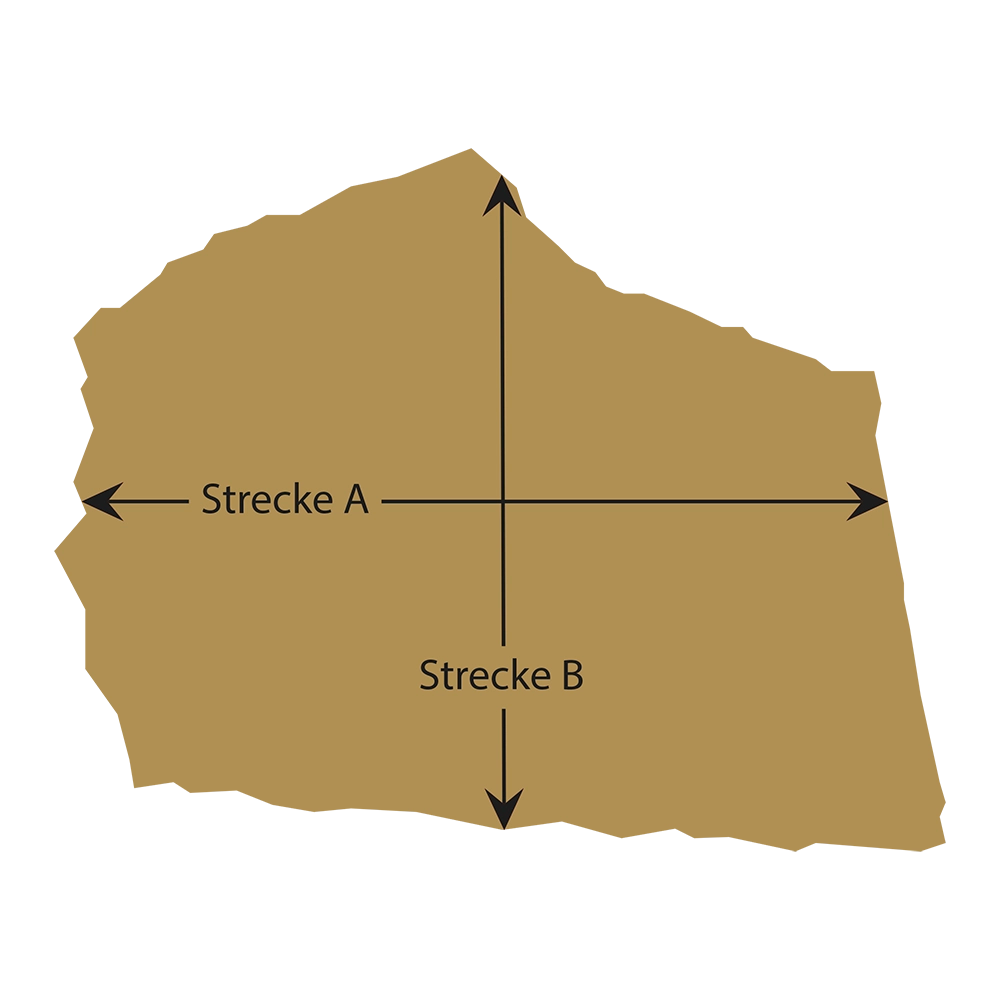

Stone Impregnation for Additional Protection
To further increase the longevity of your natural stone slabs, a stone impregnation is recommended. This protects the surface from moisture, dirt, and weather influences. Here’s how to proceed:
- Cleaning: Thoroughly clean the slabs of dust and dirt.
- Applying the impregnation: Use a suitable impregnating agent for your stone and apply it evenly with a brush or roller.
- Let it dry: Allow the impregnation to take effect and dry according to the manufacturer's instructions.
The impregnation not only makes maintenance easier but also prevents water penetration and associated frost damage.
Hand-Selected Premium Stepping Stones
-
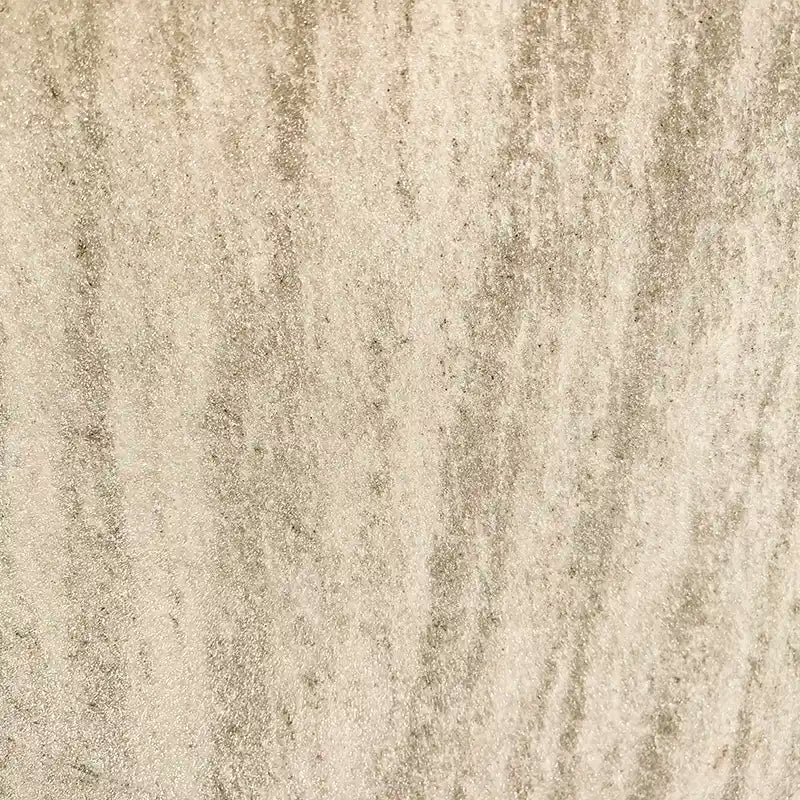
Quartzite Polaris Stepping Stones
Quartzite Polaris -
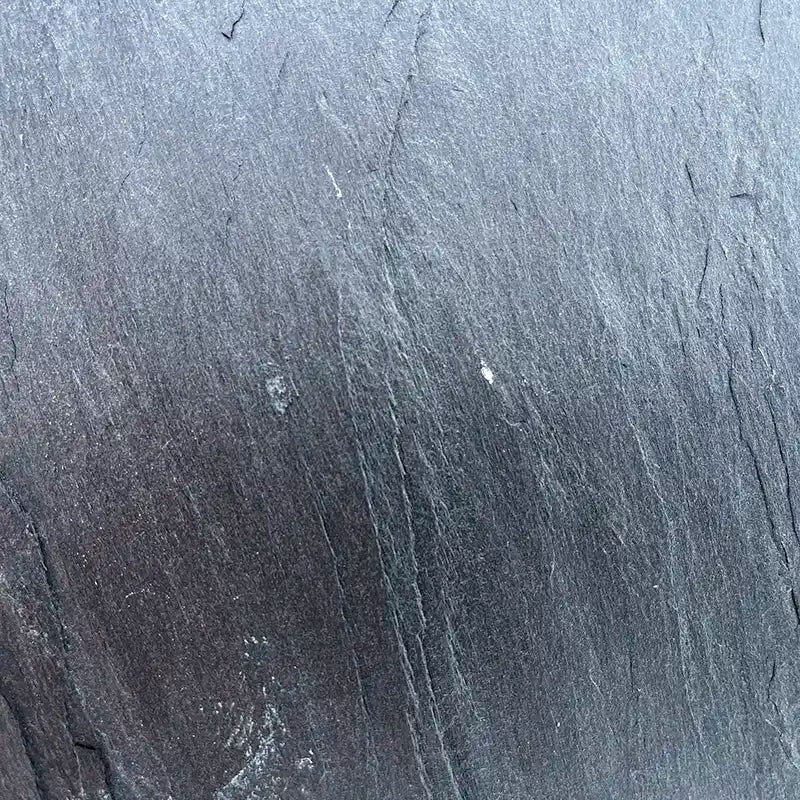
Slate Negra Stepping Stones
Slate Negra -
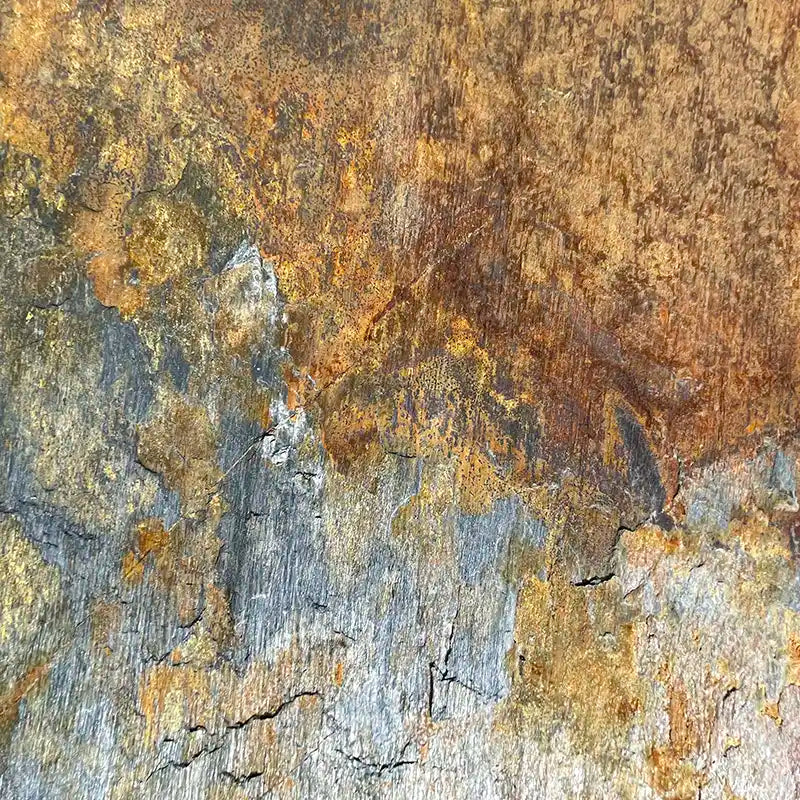
Graywacke (Silesian Slate) Stepping Stones
Greywacke -
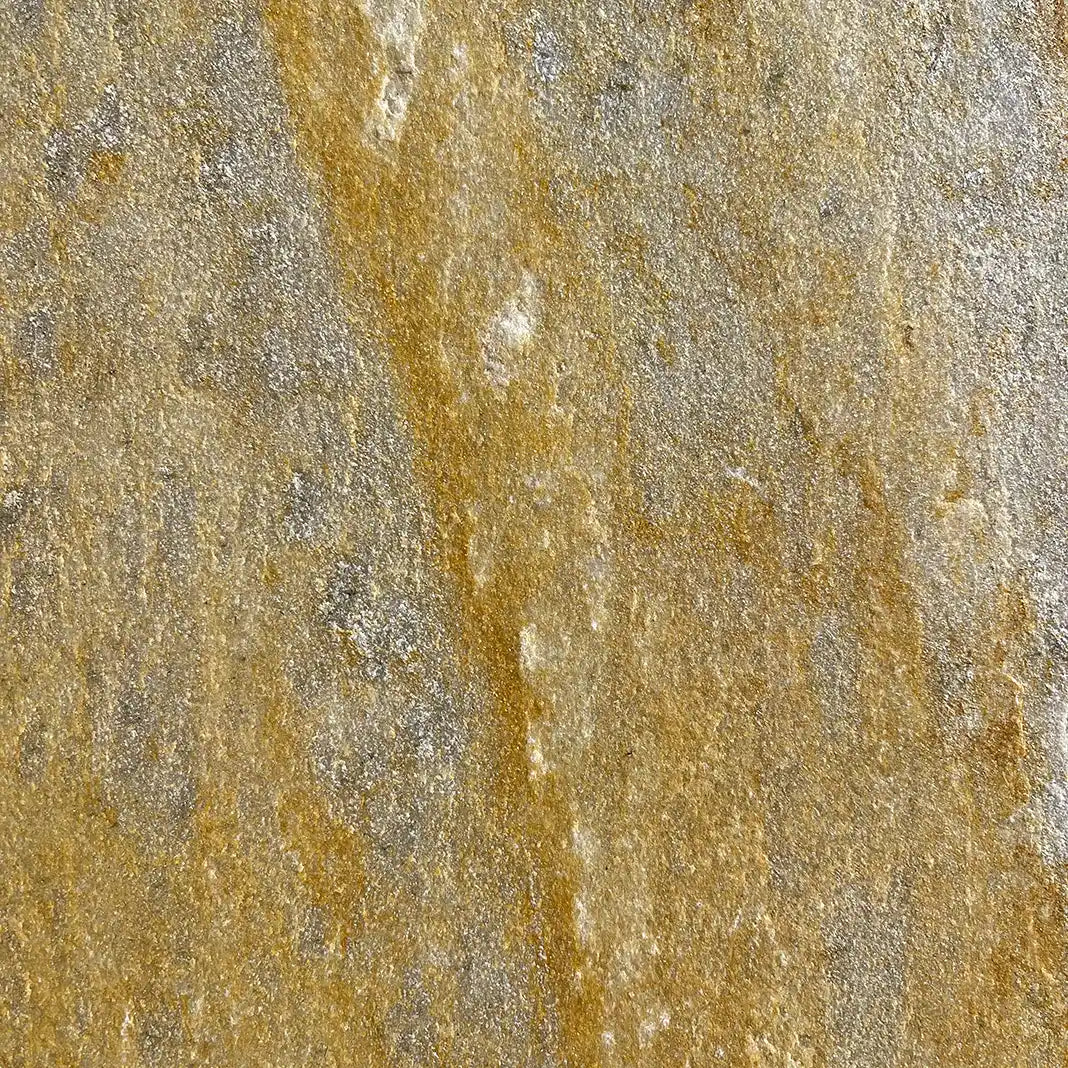
Quartzite Auralis Stepping Stones
Auralis Quartzite -
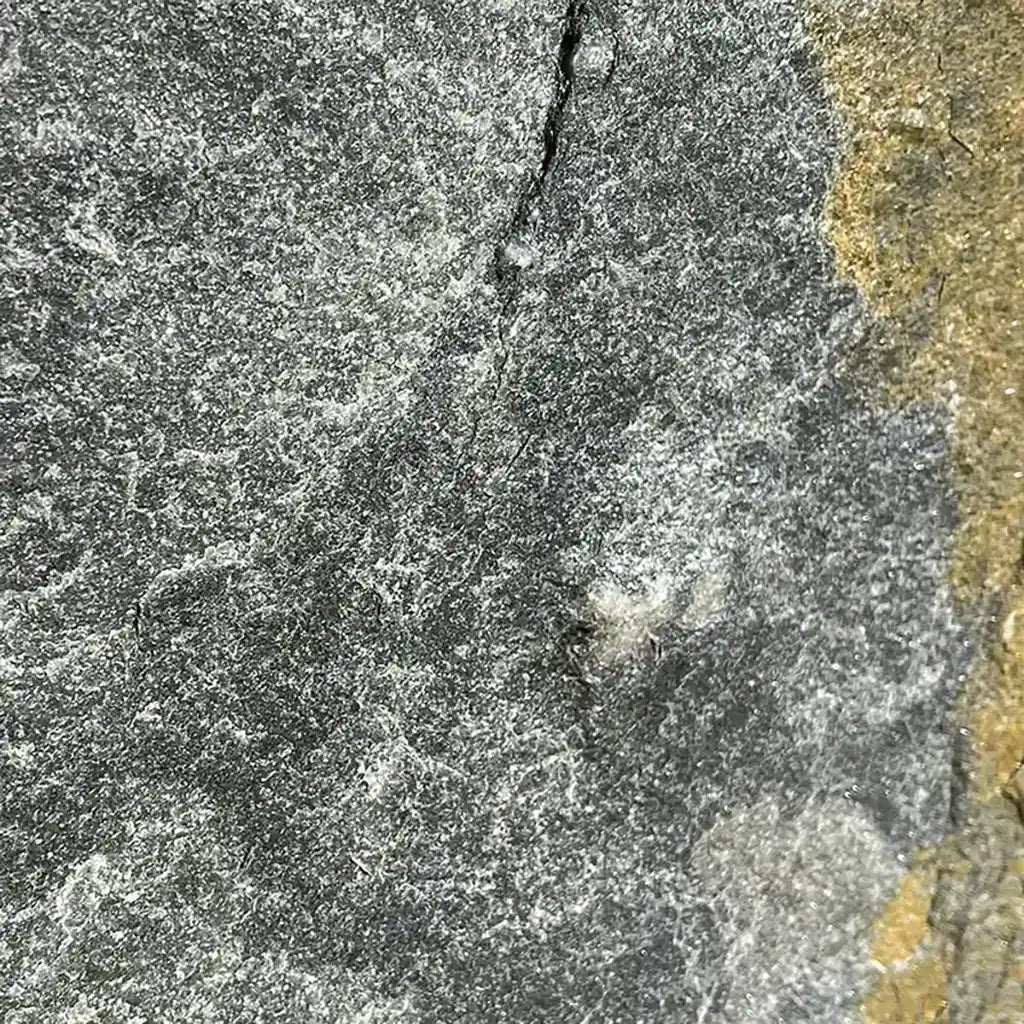
Quartzite Deep Sea Stepping Stones
Quartzite Deep Sea -
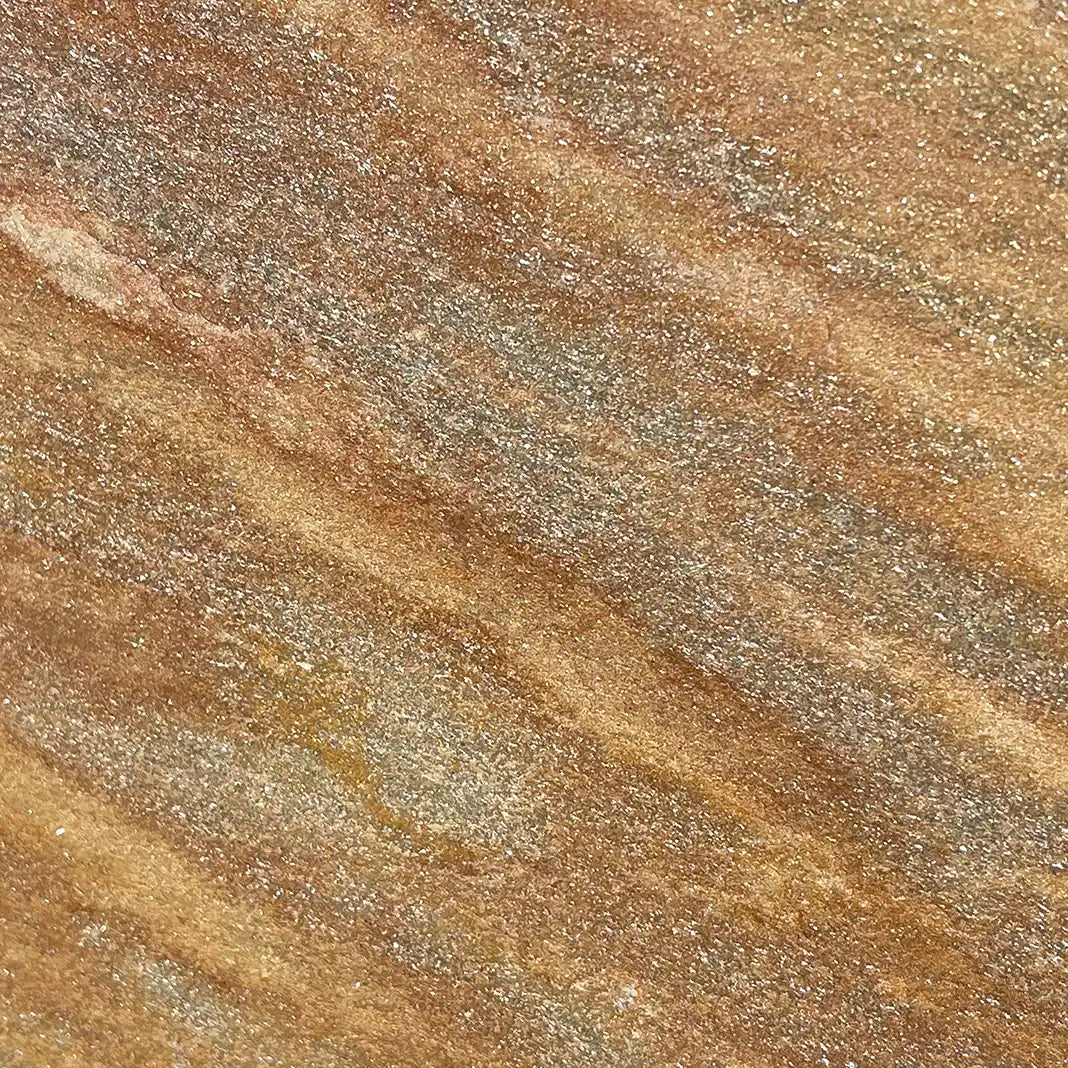
Quartzite Antares Stepping Stones
Quartzite Antares
-
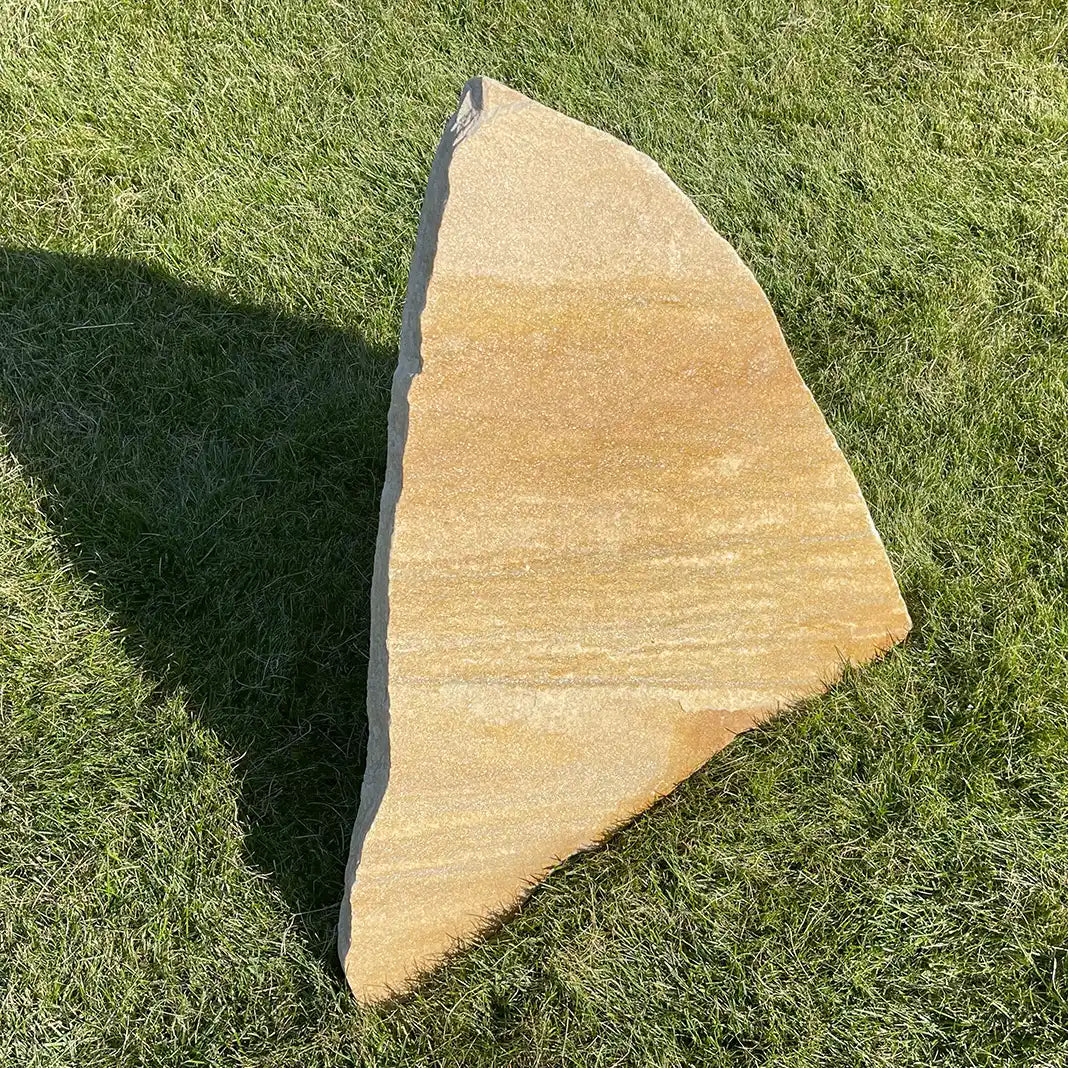
Why This Caution Is Necessary
Natural stone slabs can have internal weaknesses, such as fine cracks or voids. If a slab is worked on at such a point with a striking tool, it can lead to damage or even complete breakage. By gently placing the slabs, you distribute the pressure more evenly and significantly reduce the risk of damage. -
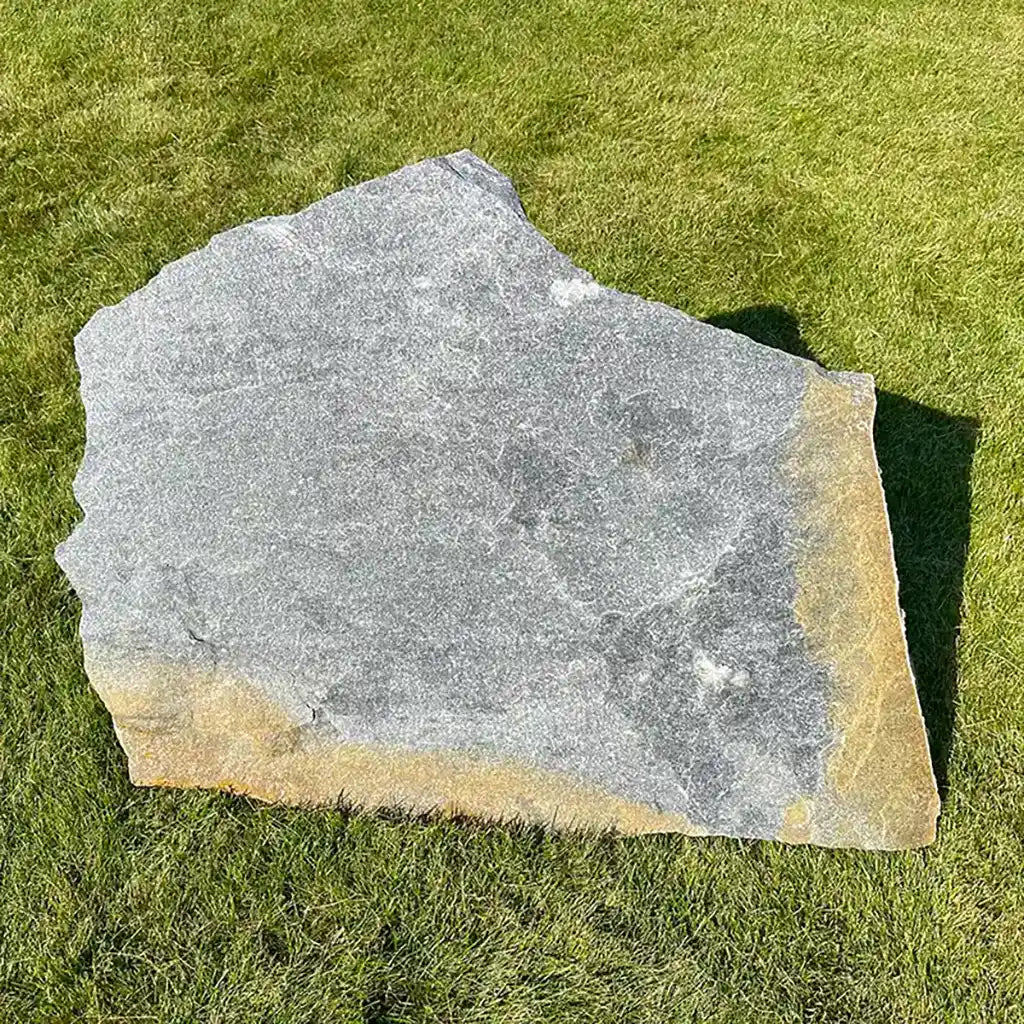
Final Adjusting and Fixing
Once the slabs are securely anchored in the substrate, you should fill the edge area around each slab with additional material (e.g., sand or gravel) and lightly compact it. This provides extra stability and prevents the slabs from shifting over time. Then, go over all the slabs again to ensure they are firmly in place and do not have any unevenness. -
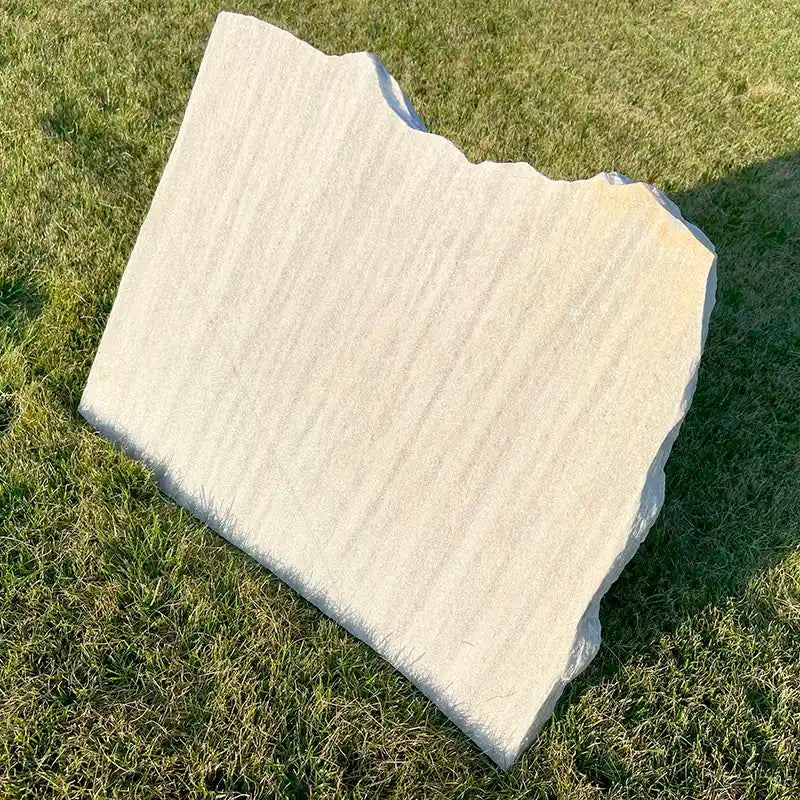
Care and Maintenance
A carefully laid path also requires regular maintenance:
- Cleaning: Regularly remove dirt and leaves from the slabs.
- Joint maintenance: Check the joints and refill material if necessary.
- Refreshing the impregnation: Depending on usage, the impregnation should be renewed every few years.
Conclusion - Longevity Through the Right Technique
Calculation of the number of stepping stones for the parallel offset installation variant
Gestalten Sie Ihren Gartenpfad mit parallel versetzt verlegten Trittplatten
Nutzen Sie unser Berechnungstool, um die Anzahl der benötigten Trittplatten für Ihren Gartenpfad (parallel versetzte Verlegevariante) zu ermitteln. Geben Sie einfach die gewünschte Länge des Gartenpfades und den Abstand zwischen den Platten ein. Standardmäßig ist der Abstand auf 20 cm gesetzt und wir gehen von einer durchschnittlichen Plattenlänge von 45 cm aus. Diese Werte können Sie wunschgemäß abändern. Grundsätzlich empfehlen wir Ihnen zu der von Ihnen benötigten Menge noch 2 weitere Trittplatten zu wählen, damit Sie flexibler bei der Verlegung reagieren können. So sind Sie auf der sicheren Seite, sollte Ihnen einmal eine Platte nicht gefallen oder zu Bruch gegangen sein.




